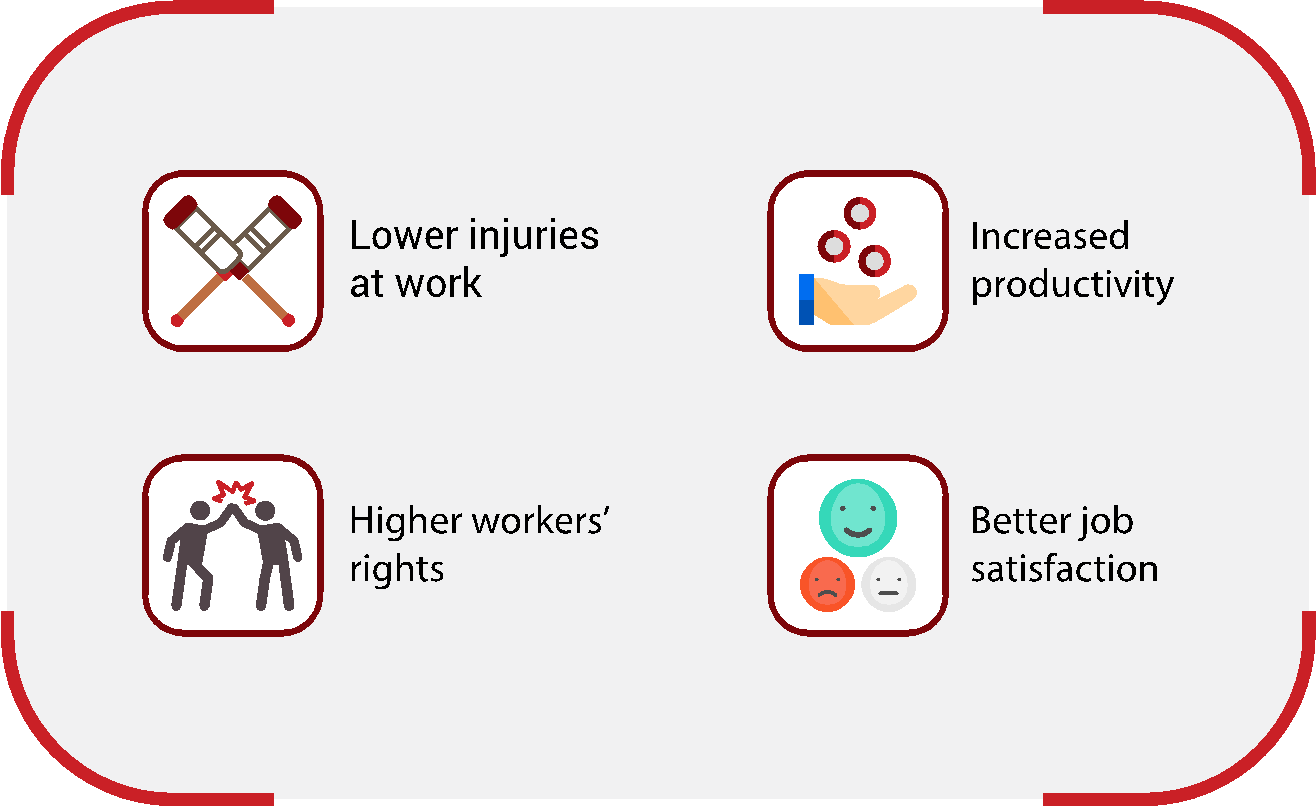Many organizations have continued to see the growing need for ongoing implementation of safety within the workplace. In 1999, BSI (British Institute of Standards) released the OHSAS 18001 standard, the Occupational Health and Safety Management System. This standard was put into place on a global level and has continued to grow with the 2007 revision. Currently, ISO 45001 has been created to succeed OHSAS 18001:2007, and although it is lined up with other standards such as the ISO 9001 and ISO 14001:2015 editions, the 2016 release has currently been delayed until 2017.
Why do we need to have a safe workplace environment and what impact does it have on employee performance? Many, to be blunt! Developed countries have the need to keep employee injuries to a minimum at a financial level. Higher injury rates equal more money spent on medical costs, lost time, etc. In those countries where worker’s rights are not as highly regarded or regulated as in developed countries, safety standards such as OHSAS 18001 or the upcoming ISO 45001, assist in filling that gap in local legislation to ensure that employee safety is the main goal and actions of the organization speak to that goal.
Nonetheless, employee productivity is not increased by being lucky or having nice workers. It is a very specific outcome that can be molded through safe practices. On that note, less downtime increased working rates, and healthier workers are all usually positive drivers in maintaining or increasing production numbers.
Think about it as though you are driving a car down the road. If it is a nice sunny day, and the speed limit is 50, you as the driver can safely and easily go this speed. Think of a sunny day as normal production. Now, say that you are driving at night time or in the rain, what safety measures would you need to keep your same constant rate of speed of 50? Clearly, headlights, windshield wipers, etc. Without these tools, you would not maintain or want to increase your speed without a greater potential of an accident occurring. The same can be said for having safety in place within your organization. If that safety is through engineering controls, you might have to guard for machinery, whip checks for high-pressure lines, sound barriers to ensure that normal conversations could take place without shouting, etc.
Now, we just covered one hierarchy of safety, engineering controls. The same example/exercise could be utilized for eliminating hazards, substitution for hazards, putting administrative controls in place, or lastly simply implementing the use of safety equipment or PPE.
Moreover, all of these steps should be in place within an organization through appropriate and documented procedures, policies, work instructions, standard operating procedures, etc. Without a firm structure that can be followed, and understood by every employee, safety cannot remain resilient and continually be improved and strengthened. This in itself can be challenging. Many, many organizations may be doing the right thing, and injuries seem to be at acceptable levels; but very often the trend is that without this support and structure, a few small incidents can continue to snowball and grow into an uncontrollable safety issue.
Has top management been a key supporter and leader of safety? Are there steps in place to look at and assess each task, job duty, machinery that is utilized, to ensure that proper safety applications have been put into place? Are potential issues or hazards thought of, through risk analysis? All of these should be looked at through internal reviews and/or audits of the organization. Yet, there should be materials that are easily reviewed that are put into place to ensure that a safe work environment is being maintained.
When reviewing one’s safe practices, it is also key, to ensure that they are in compliance and lines up with local legislation; on a national, provincial, state, county, city, or another level. In the US, it is easy to spot the usual suspects. In fact, OHSA does a great job of summarizing and reporting the top 10 “serious” violations each year. For a quick example, the list for 2015 included: fall protection, scaffolding, hazard communication, LOTO, ladders, respiratory protection, machine guarding, powered industrial trucks, electrical – wiring methods, and electrical – general requirements. These actually lines up fairly well with what we at JT Environmental Consulting see with clients, on a global level. Unfortunately, many of these are important aspects to review with new employees upon hire, and not implementing this important training can lead to accidents and potential fines.
Ultimately, having a safe work environment takes a lot of effort and ongoing work. It can only be as good as the employees, visitors, and contractors that participate. So having a more robust and easy to follow program seems to be the key to most leading safe organizations. Having this foundation also provides an easy stepping stone for ensuring that an organization is ready to meet the needs to gain and/or maintain certification to current standards such as OHSAS 18001 and future standards such as ISO 45001.
PECB
The priority put in terms of Health and Safety at work is tightly linked to not only a friendly working environment but is also directly affecting employee productivity. Maintaining a safe workplace should be continuously scrutinized as much as improved towards an ergonomic setting. Offering training to implement and maintain such an environment, PECB may also certify you against OHSAS 18001, while ensuring your commitment to employees’ well-being.










